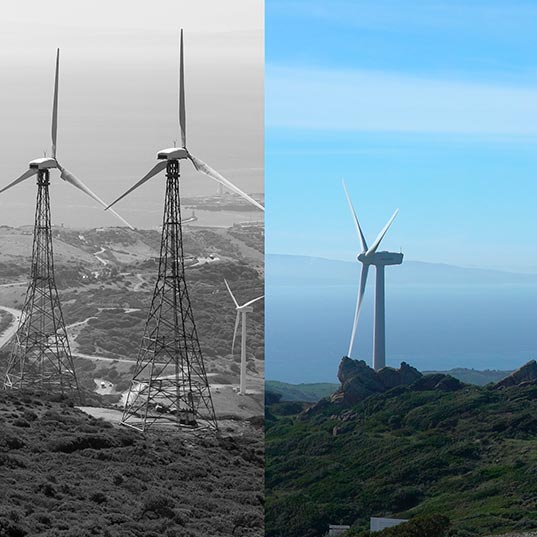Renewable energies: fuel, biogas and geothermal energy
Biofuels are liquid fuels – bioethanol, biodiesel – obtained by transforming biomass.Biofuels are liquid fuels – bioethanol, biodiesel – obtained by transforming biomass, and which can be used in vehicle engines in addition to, or instead of, petrol or gas-derived fuels. Their use substantially reduces polluting emissions.
 To prevent environmental and social risks resulting from the promotion of biofuels - such as deforestation of rainforests for palm plantation - the Food and Agriculture Organization of the United Nations (FAO) has created an International Bioenergy Platform (IBEP) to advise governments and businesses on quantifying each country's bioenergy resources, with the expectation that, in 20 years, biofuels could cover 25% of global fuel demand. At present, research on second-generation biofuels has advanced almost to commercial application, working with agricultural and forestry waste and with seaweed crops: seaweed has high calorific power.
To prevent environmental and social risks resulting from the promotion of biofuels - such as deforestation of rainforests for palm plantation - the Food and Agriculture Organization of the United Nations (FAO) has created an International Bioenergy Platform (IBEP) to advise governments and businesses on quantifying each country's bioenergy resources, with the expectation that, in 20 years, biofuels could cover 25% of global fuel demand. At present, research on second-generation biofuels has advanced almost to commercial application, working with agricultural and forestry waste and with seaweed crops: seaweed has high calorific power.
Biodiesel
This is obtained by transesterification and refinement of pure vegetable oils - sunflower, rapeseed, soy bean, palm - or by recycling waste oils. 100% unmixed biodiesel is a substitute for diesel in vehicles; in a diesel blend it can be added in amounts of between 5% and 30%.
Bioethanol
Obtained from the fermentation and distillation of grain, corn or beet. It is a petrol substitute very commonly used in countries like Brazil.
Biogas
The methanation of biodegradable waste from various sources – the organic part of municipal solid waste (MSW), livestock, the food industry and sewage sludge from urban waste water create different gases that can be combusted to produce electricity. WWTPs, landfills, breweries and slurry treatment plants are all places that can be harnessed to produce energy.
Geothermal energy
The heat from igneous masses inside the Earth can be used to produce electricity – 7,000 megawatts installed worldwide, 2,700 in the USA – or to provide residential heating and hot water. Every 10 metres deeper, the temperature rises 1º centigrade. Public and private buildings have already been built that harness heat from inside the Earth, through underground pipes,for use in their HVAC systems.







